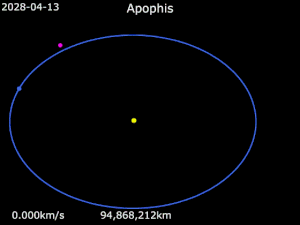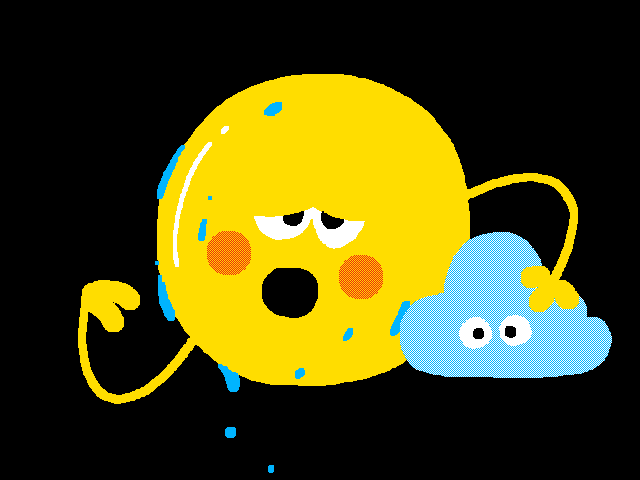How it All Ends. The Science Behind it
What’s the end of the world as we know it? Religious interpretations of this question aside, also putting aside man-made catastrophes, we know that astronomically speaking the Sun will eventually burn out and at this point life will cease to exist. But, is this the whole story, and why is this question important to humanity?
We know that catastrophic meteorite impacts have occurred in the past. 66 million years ago, an asteroid or comet struck the earth and caused a crater 150 kilometers in diameter.
The Vredefort crater in South Africa is double that size although is 2023 million years old. Not as many asteroid collisions occur with Earth today as occurred during Earth’s formation during the period of “heavy bombardment”. This has much to do with the formation processes of our solar system. But, it does not mean it cannot happen again. Asteroids such as Apophis are large enough and pass close enough to Earth in their orbits so as to present an existential threat.
But, perhaps this will never happen. If the probability of something happening is not zero, given a long enough period, that thing will eventually happen. But, it is possible we can develop technology and techniques that will allow us to intercept an object such as Apophis should it begin on a direct collision course with Earth.
The sun increases in luminosity on the order of 10% per billion years. When this occurs, Earth will no longer be in the Sun’s habitable zone and most liquid water will be boiled. A typical day will be 212 Fahrenheit (100 degrees Centigrade), the temperature of an oven.
At this point, Earth will begin a long process of becoming a second Venus type planet (which has already experienced a runaway greenhouse effect). Since water vapor is a greenhouse gas, this only exacerbates a worsening situation and livability on this planet rapidly deteriorates. Plants and sea life that previously produced oxygen for the planet will be dead and the oxygen levels of the planet will plummet.
Assuming humans survive this situation (they will not) for some billions of years thereafter, the Sun will then exit its main sequence phase. The sun is about 4.5 billion years old and will exit its main sequence phase at approximately 8 billion years (it’s a little more than middle-aged right now). The Sun doesn’t explode outward because it doesn’t have enough energy to overcome the gravity that holds it together. But, because the Sun loses mass on a continual basis as it burns, there is less and less mass to hold it together during its reaction. This allows the sun to expand and envelop Mercury, Venus, Earth and maybe Mars. Perhaps. The Sun will be so hot that even Jupiter will reach hellish temperatures.
Perhaps Pluto would make a nice prospect for resettlement if it weren’t for the fact that it has 1/12 of Earth’s gravity which is not tenable for the human body. Too, since Pluto is a Kuiper belt object quite far from the Sun and the Sun at this point will have lost much of its mass, weakening its gravitational pull, it may indeed be flung out of the solar system entirely, which of course is also not tenable. But, if it does remain in solar orbit, Pluto does have stores of water on and in its surface, as does Titan, one of Saturn’s moons, which may become a candidate for an inhabitable world.
The galaxy Andromeda is on a direct collision course with the Milky Way galaxy, which happens to be the galaxy in which our solar system resides. There is an unlikely, but still possible, chance that any place we are living at that time will collide with another world during the time the two galaxies collide. It won’t be Earth, since our planet will be a crispy critter by that point, which is estimated to be in 4.5 billion years.
Image source: NASA
At the moment, the black hole that is at the center of the Milky Way galaxy (named Sagittarius A Star) is not really actively feeding on much. In fact, most black holes go through much of their lives being largely starved of matter to “eat”. However, who knows what will happen when the Andromeda collision occurs. The black hole at the center of our galaxy is 1 to 2 million solar masses and the black hole at the center of the Andromeda galaxy is over 200 million solar masses. Both galaxies have many smaller black holes, on the order of hundreds of millions. Of any black hole collides with a great deal of matter to “eat”, it must first “digest” that matter, which can cause a quasar to occur until the black hole catches up with the “digestion” process. If a quasar occurs anywhere near an inhabited planet, its gamma rays would destroy that life in short order.
Speaking of black holes, it’s a bit easier to spot the supermassive variety on account of their accretion discs. But, smaller black holes and primordial black holes are much more difficult to spot and are wandering around where nobody can see them. The infinitesimally small probability of one of these impacting an inhabited planet may be small but it does not give one a “warm and fuzzy” feeling.
But, if it has ever crossed your mind that this is a somewhat depressing and hopeless situation described here, it is certainly more optimistic than Stephen Hawking’s prediction that humanity has only about 1,000 years left on the planet before seeing complete destruction. According to Hawking, climate change, artificial intelligence and other man-made existential threats comprise the most pressing of concerns.
In the meantime, we can be thankful we are living at an early time in the history in the universe where we can see and study the stars and universe that surrounds us (as the universe expands, over the course of billions of years, this will no longer be the case). We live at a time where a day is 24 hours (it has not always been so, and will not be so later), we live around a sun on a planet that is optimally placed for life to survive and thrive. Former President John F. Kennedy explained the history of mankind as a sort-of blink of the eye in astronomical terms; it is so. Whenever you’re feeling maudlin, remember to appreciate the world around you and appreciate the fact that what we have was not always as it is and will not be as it is forever.
Further Reading:
List of Impact Craters on Earth
Cold Quasars: The Death of Galaxies
The Andromeda / Milky Way / Large Magellanic Cloud Collision
Black Holes in the Andromeda Galaxy
The End of the Universe: What Will Happen?
What the Future Holds for Earth and Sun
Earth’s Days are Getting Longer
Vocabulary:
Collisions: When two objects or particles hit one another
Existential: As relating to existence
Intercept: To interrupt along a path
Luminosity: Brightness
Exacerbates: To make more bitter
Deteriorates: Worsens
Crispy Critter: Burned, in the vernacular
Vernacular: Slang
Accretion Disc: Rotating disc of matter, in this case, around a black hole, kept in orbit as a result of gravitational pull
Primordial Black Hole: In theory, a black hole formed shortly after the Big Bang rather than by traditional means by way of stellar collapse
Infinitesimally: Extremely small
ABOUT THE AUTHOR
Nicholas Chudolij is graduate student within American Public University's Space Studies faculty, Astronomy track. Nicholas loves traveling, fishing, competitive marksmanship and playing the flute.











